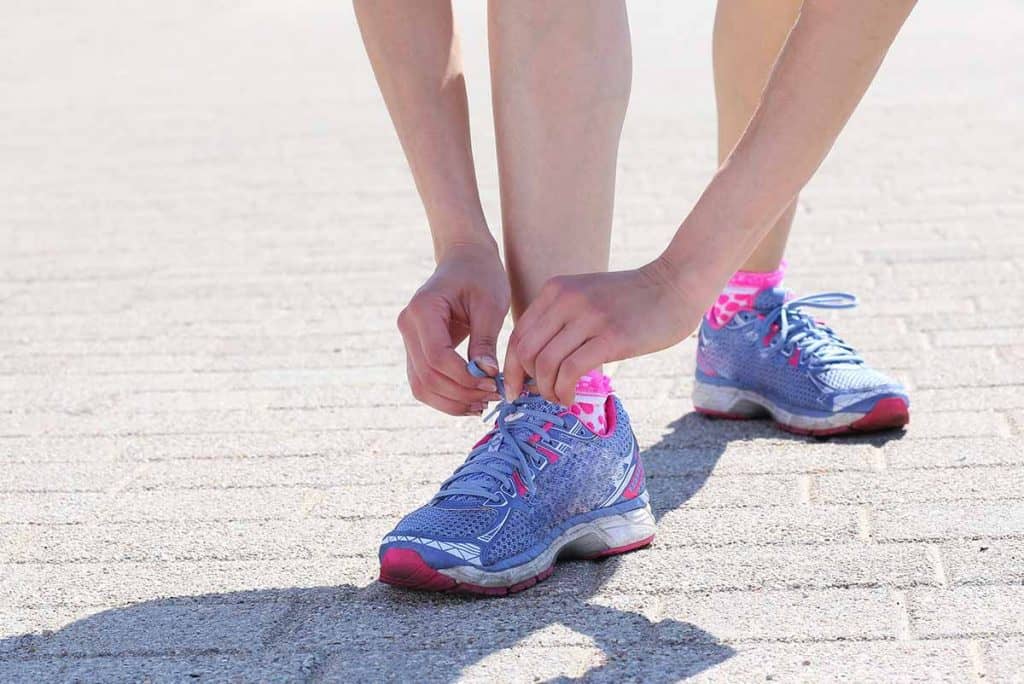As a health and fitness enthusiast, the question that I often come across is – How long does it take to see results from running? I’ll put that to rest today by narrating my own personal journey towards weight loss and achieving the body that I always wanted.
Over the past years, I have dealt with so many insecurities surrounding my appearance. I knew I was exposing myself to a multitude of diseases by eating and living carelessly. I committed myself to an extensive exercise regime that included running and dieting.
I highly benefitted from running. It definitely has played a big part in getting me into shape. You might want to keep scrolling and reading because the solution lies here! It is about time that you get into shape as well.
Establishing Our Assumptions
The first thing I want to do is to analyze the influencing factors. We have to talk about this to control the influencing variables.
First, let me first assume that you have set a recovery plan after every workout. Presuming you are following these three measures after every session
- Fuelling properly
- Getting additional sleep
- Reducing soreness by massaging and stretching
I am positive that you are doing more to fasten your recovery process. But let us just utilize these general workout applications as the baseline.
Secondly, we need to assume the general rate concerning your recovery. There are runners with the ability to quicker than their peers. Runners tend to recover steadily as they age. For instance, a 60-year old will take a longer recovery time from an intense workout in comparison to a 25-year old.
Let us assume your recovery rate is about average concerning a 35-40-year-old. If you are older or your recovery rate is quicker than your running peers, then you will be closer to the exterior number ranges given below.
How Long Will It Take to Reap the Benefits from Every Type of Workout?

You have to understand that the workout type you execute and your running intensity will be the key factors in determining your results rate. Why? Well, because your nervous systems, cardio-respiratory, and muscular systems respond differently to training. The adaptation will vary because every workout is in design to stress a specific physiological system.
Let me break down the exercises that will show how fast you can reap the benefits. You need to incorporate them into your training schedule.
Speed Expansion
Workouts to develop speed stresses on the nervous system. It is in design to create healthy communication between your muscles and the brain. An excellent percentage of muscle fibers will be activated by the brain. It will fire them in a forceful manner.
Speed development exercises aren’t the common form of speed work that the general runners think about. You will be doing short and full speed repetitions at a full recovery. A great example of this workout would be Explosive Hill Sprints, 200m repeats, or in-and-out 150’s with full recovery.
It is the usual stuff that you witness sprinters do within the track. It is possible to reap the results from this workout in a day or two. Since the recovery and growth cycle are quite short, the nervous system will quickly respond to new stimuli.
VO2max & Hill Work
These workouts will easily maximize your anaerobic capacity. It will give you the ability to resist a large amount of oxygen debt as well as your muscular system. The anaerobic capacity and muscle strength will take time to develop due to the high demand on the body, as well as the extended time it takes for muscle fibers to recover after the session.
You will start to see the results within 10-14 days. The workout is quite demanding, and you might feel like you have lost fitness for 8-9 days after these exercises. Yes, it will be difficult to run the next day after you scored an intense workout session of 400’s. However, the performance loss would carry through for some additional days, so be cautious.
Threshold Runs
Threshold runs, marathon pace runs, and also tempo runs trains your body for boosting the ability to reconstruct lactate back into energy. These forms of workouts are generally taxing but not slow. The tempo run is quicker after a recovery cycle. It allows you to garner maximum benefits from the session in between 7-10 days.
Long Runs
The primary focus of the long run is to develop your aerobic system. It is attainable by boosting the size and number of the mitochondria within your muscle fibers. It also boosts the number of capillaries and the myoglobin content in your muscle fibers.
You have to realize that the benefit won’t come right away. It took me 4-6 weeks to witness the changes in your actual training and aerobic ability. The more experience you have, the lesser benefits you will feel from the long run because your aerobic structure is already in a perfect place.
An Easy-To-Use Table
| WORKOUT TYPE | DIFFICULTY / INTENSITY | ANTICIPATED BENEFITS |
| Speed Development | Hard | 1-3 Days |
| Hard | 1-3 Days | |
| VO2max / Hills | Hard | 12-15 Days |
| Medium | 9-11 Days | |
| Threshold | Hard | 10-12 Days |
| Medium | 7-10 Days | |
| Long Run | Hard or Medium | 4-6 Weeks |
This table will deconstruct the general timeframe that it takes to know the benefits of every single workout mentioned above. It will be easier for you to understand the 10-day rule. It isn’t an accurate assessment because the benefits derived from these sessions will vary.
Are You Making These Common Running Mistakes?

Runners often make these mistakes during racing or training. I was just as guilty as the rest of the people with these pointers. Maybe you should check yourself?
Wrong Kicks
Wearing old or the wrong type of running shoes will hamper your training. The best thing you can do is to visit a running specialty shop that evaluates your foot type and style. Based on whether you are a neutral runner, over-pronator, and under-pronator, the salesman will recommend the perfect shoes for you.
Overdoing It
If you are new to running, then don’t make the mistake of overdoing it. I get that you are enthusiastic, and the excitement is off the roof. However, running without rest and recovery will lead to injuries such as runner’s knee, shin splints, and ITB syndrome.
It is best to be conservative during your early development. You have to learn to gradually increase your mileage. It is best not to let your weekly mileage cross the 10-percentage mark. You can begin walking and then proceed to run.
Avoid Overstriding
Runners tend to think that a longer stride will automatically enhance their running efficiency. But it is actually the complete opposite as you are wasting your energy. It also carries health injuries such as shin splints. It is advisable to avoid lunging your feet forward. It is imperative for running downhill.
You should stress on landing mid-sole with your foot straight underneath your body with each step. A low and short arm swing is the key role in maintaining your stride short and also close to the ground. Try keeping your steps fast and light.
The wrong form of Upper Body
Runners tend to swing their arms in a side-to-side manner that makes slouchy and have trouble breathing. Some rookies also tend to hold their hands all the way up to their chests. But what they don’t realize is that it will cause more tension and tightness in your neck and shoulders.
Your hands should be at the waist level, where they are brushing lightly against your hip. Your elbows should be in position at the sides, and your arms are required to be at a 90-degree angle. Your arms should be rotating at the shoulder instead of your elbows.
Losing Power on Hills
Some runners tend to lean way forward during a downhill run. They also run out of control and overstride that can cause health injuries. The best tactic is to slightly lean forward and take quick and short strides. Avoid leaning back and trying to brake yourself.
Your shoulders should be placed in front of you and also your hips under you in a slight manner. Yes, it is tempting to overstride, but you should refrain from taking massive leaps to decrease the pounding on your legs. You should also abstain from putting stress on your joints.
Not Staying Hydrated
Runners tend to drink less water because they get worried about taking side stitches. You should at least consume 16-24 ounces of H2O or additional non-caffeinated fluids an hour before you run. This will give you enough time to take a leak before the running starts.
Plus, you can drink at least 4-8 ounces just before you start running. You can always consume a Gatorade during longer workouts. Rehydrating after your run is another important thing that you should keep in mind at all times.
Summing it Up
There is no universal and accurate answer to this query because there are a ton of factors that come into the mix. But with the proper assessment of these factors, you can always conclude a fairly accurate estimation of the anticipated results. The results you are looking for won’t be that far-fetched. Trust Me! You got this.

